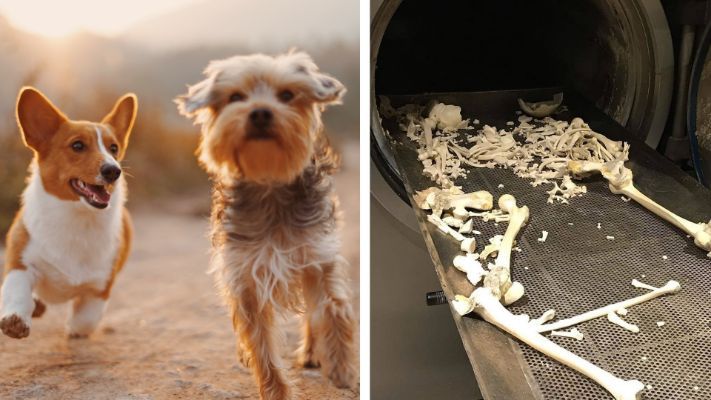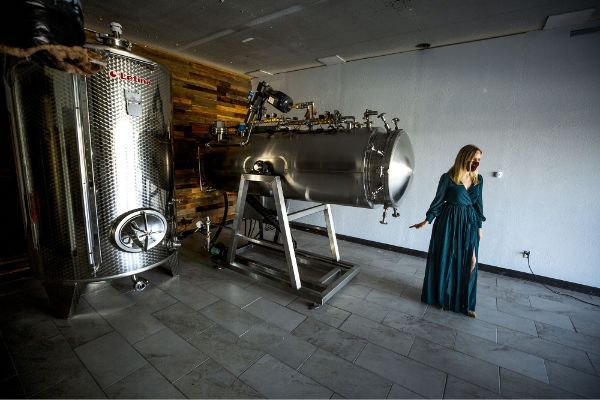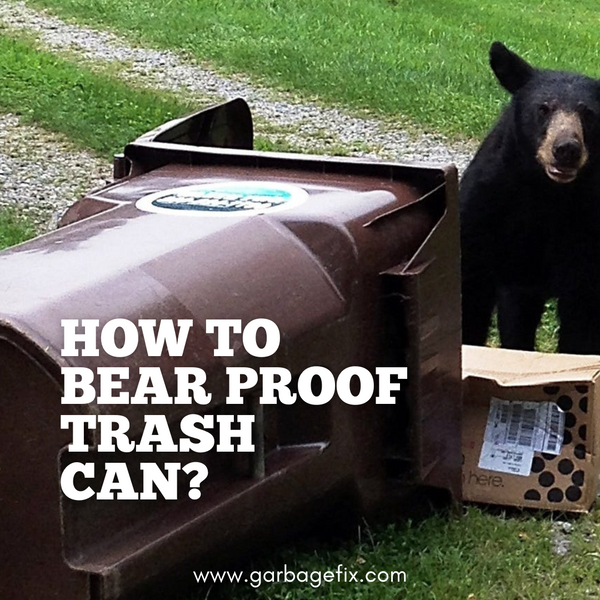Properly disposing of your deceased dog is crucial to honoring the bond you shared. This guide aims to provide a compassionate and informative approach to this delicate matter.
Throughout this article, we will explore options for the dignified disposal of your beloved pet, considering both your personal preferences and the legal and environmental factors involved. Whether you choose a home burial, cremation, donation for scientific research, or rendering services, we'll walk you through the process step by step. Additionally, we will discuss the legal requirements and eco-friendly considerations to ensure you make an informed decision.
While this topic may be difficult to contemplate, our goal is to offer you guidance and support during this challenging time, helping you find solace in knowing that your dear dog's final journey is handled with the love and respect they deserve.

How To Dispose Of a Dead Dog? - Step-By-Step Guide
Losing a beloved pet can be an emotionally challenging experience, and it's important to handle their remains with care and respect. This step-by-step guide will help you navigate the process of disposing of a deceased dog responsibly and compassionately.
Step 1: Gather Necessary Supplies
Before you begin, ensure you have the following items on hand:
- A shovel
- A biodegradable bag or casket
- Gloves
Step 2: Choose a Suitable Location
Select a location for the disposal that complies with local regulations. It should be away from water sources, at an appropriate depth, and on the property you own or have permission to use.
Step 3: Notify Authorities or Services
If you live in an area with specific regulations regarding pet disposal, contact local authorities or pet disposal services to understand any legal requirements or restrictions.
Step 4: Home Burial

If you choose home burial:
- Dig a deep hole to prevent scavengers from disturbing the remains (typically at least 3 to 4 feet deep).
- Place your deceased dog in a biodegradable bag or casket.
- Lower the bag or casket into the prepared grave.
- Carefully cover the grave with soil, creating a mound.
- Consider marking the spot with a memorial marker or planting a tree or flowers as a tribute.
Step 5: Cremation

If you opt for cremation:
- Choose a reputable cremation service.
- Arrange for private cremation (your dog is cremated individually) or group cremation (multiple pets cremated together).
- If you select private cremation, you can decide whether to keep the ashes in an urn or scatter them in a meaningful location.
Step 6: Donation for Scientific Research
If you wish to donate your dog's body for scientific research:
- Find research institutions or universities that accept animal donations.
- Contact the chosen institution and inquire about their donation process.
- Follow their specific guidelines, which may include transportation arrangements and consent forms.
Step 7: Rendering Services
For rendering services:
- Locate a rendering facility in your area.
- Contact the facility to arrange for the disposal.
- The rendering process converts your pet's remains into useful byproducts, contributing to environmental sustainability.
Step 8: Coping with Grief
Losing a pet can be emotionally challenging. Seek support from friends, family, or a pet loss support group. Consider creating a memorial to honor your dog's memory and find healthy ways to cope with your grief.
Legal and Environmental Considerations When Disposing of a Deceased Dog

When dealing with the disposal of a deceased dog, it's crucial to be aware of legal regulations and environmental considerations to ensure that you act responsibly and in compliance with local laws. This section explains these important factors in more detail:
Local Regulations and Permits
- Different regions and municipalities may have specific laws and regulations regarding the disposal of deceased animals. Researching and understanding these regulations before proceeding with any disposal method is essential.
- Some areas may require permits or have restrictions on home burials, while others may have zoning laws that dictate where pet cemeteries can be located.
- Failure to adhere to local regulations can result in fines or legal consequences, so it's essential to be well-informed.
Environmental Impact
The environmental impact of pet disposal is an increasingly important consideration. Many pet owners want to ensure that their choices are eco-friendly and sustainable.
- Biodegradable options: Using biodegradable bags, caskets, or urns for burials and choosing environmentally friendly cremation processes can help minimize your pet's environmental impact.
- Water-based aquamation: Some environmentally-conscious pet owners opt for water-based cremation (aquamation), which uses less energy and produces fewer emissions than traditional cremation methods.
- Impact on soil and water quality: Improper burials can harm soil and water quality, so choosing a burial site away from water sources and following proper depth guidelines is important.
Biodegradable Caskets
- Many pet cemeteries and burial options offer biodegradable caskets from materials like bamboo or recycled paper. These caskets break down naturally over time, reducing environmental impact.
- Biodegradable caskets can also be used in home burials, helping ensure your pet's remains return to the earth without harming the environment.
Cremation vs. Burial

- Consider the environmental implications of cremation versus burial. While cremation may release carbon emissions into the atmosphere, traditional burials can use resources for grave maintenance.
- Private cremation or water-based cremation methods may offer more eco-friendly alternatives to traditional cremation.
Water-Based Aquamation
- Water-based aquamation, alkaline hydrolysis, is an eco-friendly cremation option that uses water and alkali to break down the body. It has a lower carbon footprint compared to traditional cremation.
- Before choosing this method, check if it is available in your area, as it may not be as widely offered as traditional cremation services.
Conclusion
Disposing of a deceased dog is a legal and environmental responsibility and a heartfelt tribute to a faithful companion. By choosing responsible and eco-friendly methods, you can ensure your beloved pet's final journey is marked by respect and dignity. Let your choices reflect the love you shared, and may the memory of your cherished companion live on in your heart and the positive impact of your decisions.








